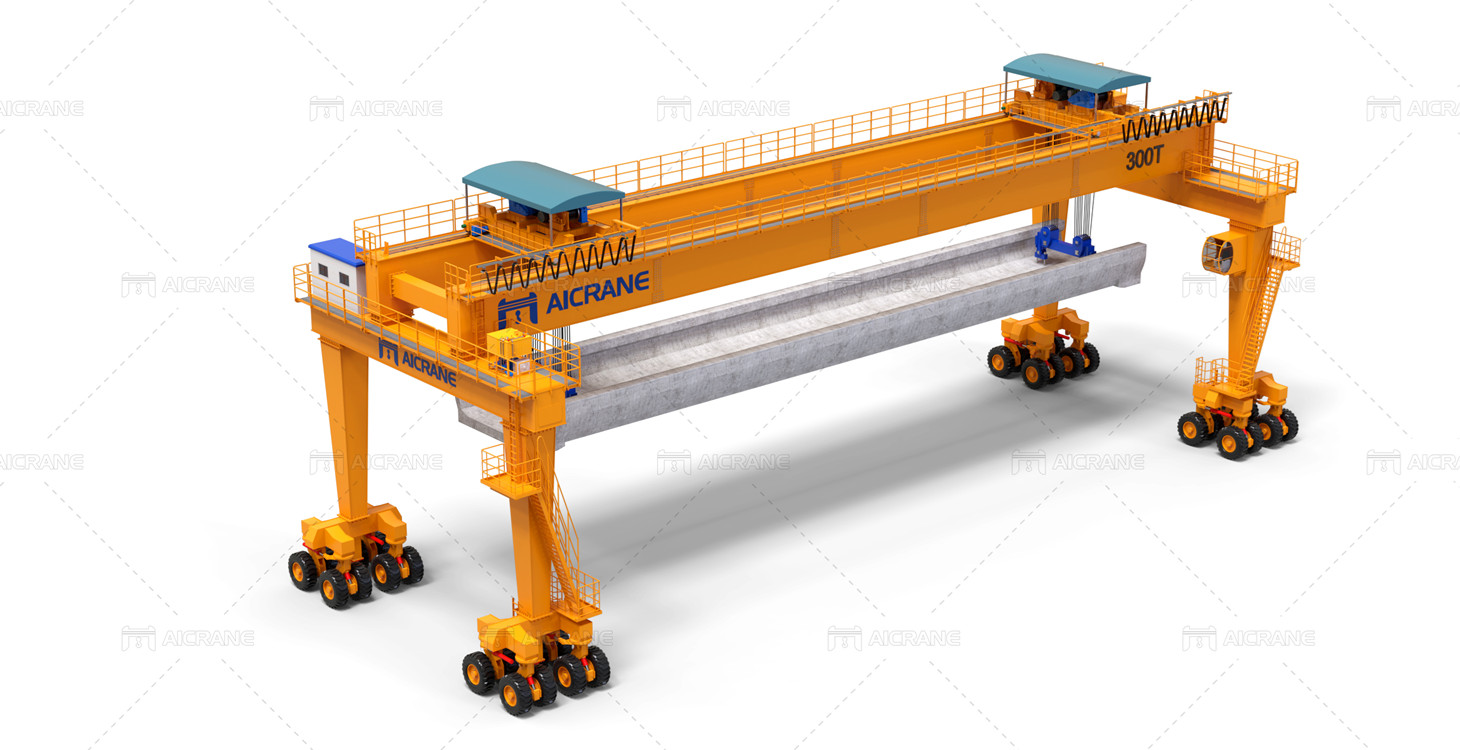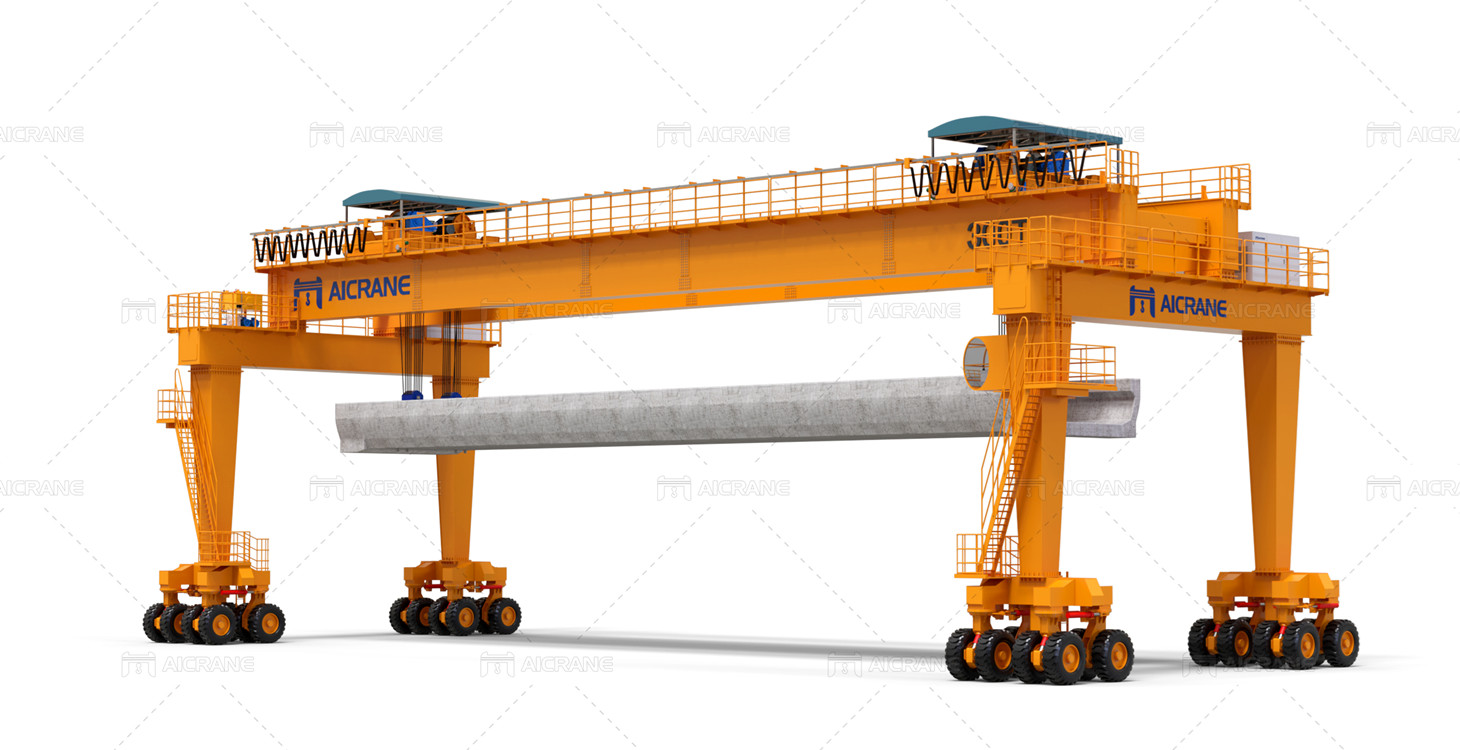Maintaining the tires of a straddle carrier crane is crucial for ensuring optimal performance, safety, and longevity of the equipment. Straddle carriers are heavy-duty, specialized machines used in container terminals, ports, and logistics facilities for lifting and transporting containers and heavy loads. Proper tire maintenance is essential to minimize downtime, prevent accidents, and extend the service life of the straddle carrier. Below is a comprehensive guide on how to maintain the tires of a straddle carrier crane:

Regular Inspections
Conduct regular visual inspections of the tires to check for signs of wear, damage, or abnormalities. Inspect the tire treads, sidewalls, bead areas, and inflation levels for any cuts, cracks, punctures, bulges, or uneven wear patterns. Look for embedded foreign objects such as nails, stones, or debris that could cause tire damage or leaks. Inspect the tire valves, stems, and rims for proper alignment, sealing, and integrity.
Tire Pressure Checks
Monitor and maintain proper tire pressure according to manufacturer recommendations and specifications. Use a calibrated tire pressure gauge to measure tire pressure when the tires are cold (before operation). Adjust tire pressure as needed to ensure optimal inflation levels and load-bearing capacity. Under-inflated tires can lead to increased rolling resistance, uneven wear, reduced fuel efficiency, and potential tire failures. Over-inflated tires can cause reduced traction, harsh ride, and decreased tire lifespan.
Alignment and Balancing
Ensure proper wheel alignment and tire balancing to prevent uneven tire wear, vibrations, and handling issues. Align the wheels and axles of the straddle carrier crane to manufacturer specifications to minimize tire scrubbing, toe wear, and steering problems. Balance the tires and wheels to reduce vibrations, improve stability, and extend tire tread life. Address any alignment or balancing issues promptly to maintain optimal crane performance and tire condition.
Rotation Schedule
Implement a regular tire rotation schedule to promote even wear and extend tire life. Rotate tires at specified intervals or mileage based on usage patterns and load distribution. Front tires may wear differently than rear tires due to steering, braking, and weight distribution, so rotating tires helps equalize wear and maximize tire longevity. Follow the recommended rotation pattern (e.g., front-to-back, cross rotation) specified by the tire manufacturer or equipment manual.

Tire Cleaning and Maintenance
Keep the tires clean and free from debris, mud, grease, and contaminants that can accelerate tire wear and corrosion. Use mild detergent, water, and a soft brush to clean the tire treads, sidewalls, and rims regularly. Avoid using harsh chemicals, abrasive cleaners, or high-pressure washers that could damage the tire rubber, valve stems, or seals. Inspect tire surfaces for signs of deterioration, discoloration, or chemical exposure that may require specialized cleaning or treatment.
Tire Repairs and Replacements
Promptly address any tire damage, punctures, leaks, or failures to prevent safety hazards and equipment downtime. Repair minor tire punctures or cuts using approved tire patch kits, plugs, or sealants following industry standards and manufacturer guidelines. Replace damaged or worn tires with compatible, quality replacement tires that meet load ratings, size specifications, and performance requirements. Use proper tire mounting and dismounting procedures to prevent rim damage or bead leaks.
Load Management and Tire Care
Manage loads and cargo handling practices to minimize excessive stress, impacts, and overloading on the tires. Avoid sudden starts, stops, turns, and maneuvers that can cause tire skidding, sidewall damage, or tire blowouts. Distribute loads evenly across the crane’s chassis and tire contact patches to reduce tire wear and strain. Monitor load weights, distribution, and handling techniques to prevent overloading or exceeding heavy duty gantry crane capacity limits.
Environmental Considerations
Consider environmental factors that can affect tire performance and longevity. Extreme temperatures, humidity, exposure to UV radiation, saltwater, chemicals, and abrasive surfaces can accelerate tire deterioration and aging. Store straddle carrier gantry cranes in covered or sheltered areas when not in use to protect tires from weathering, sun damage, and environmental hazards. Use tire protectants, coatings, or treatments to enhance tire resilience and durability in harsh operating environments.
Training and Operator Awareness
Provide training and guidance to crane operators, maintenance personnel, and staff on proper tire care, inspection procedures, maintenance tasks, and safety practices. Educate operators on load handling techniques, tire pressure monitoring, tire condition assessments, and reporting procedures for tire issues or concerns. Encourage operators to conduct pre-shift checks, visual inspections, and post-operation assessments of tires to detect and address potential problems early.
Record Keeping and Documentation
Maintain detailed records and documentation of tire maintenance activities, inspections, repairs, replacements, and performance data. Keep track of tire service history, rotation schedules, pressure readings, alignment adjustments, and any tire-related incidents or issues encountered. Use digital or paper-based maintenance logs, work orders, and inspection reports to track tire health, track maintenance costs, and inform future tire management decisions.
By following these tire maintenance practices and implementing a proactive approach to tire care, operators and maintenance teams can optimize the performance, safety, and reliability of straddle carrier crane tires. Regular inspections, proper inflation, alignment, rotation, cleaning, repairs, load management, and operator training are key elements of effective tire maintenance programs. Investing time and resources in tire care can yield significant benefits in terms of equipment uptime, productivity, and cost savings over the crane’s lifespan.